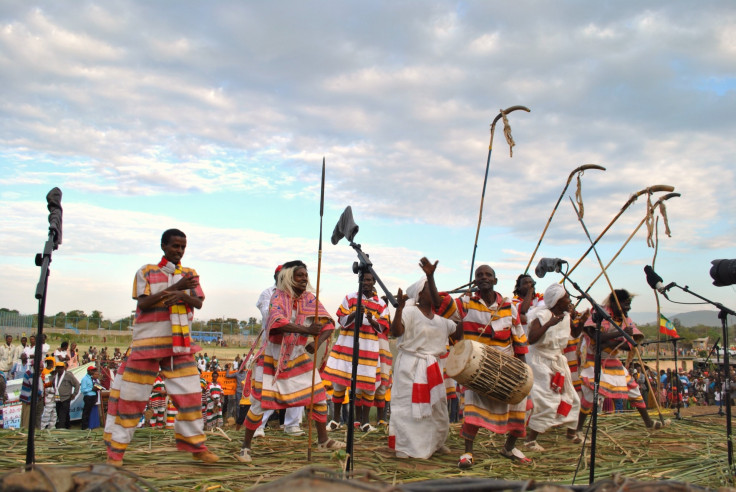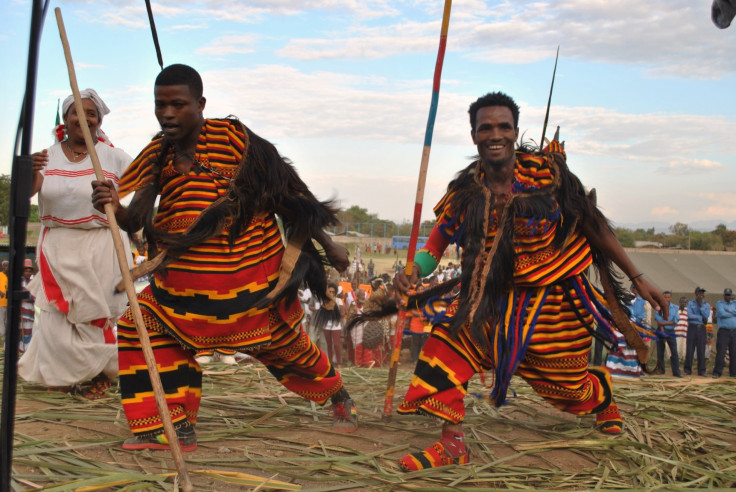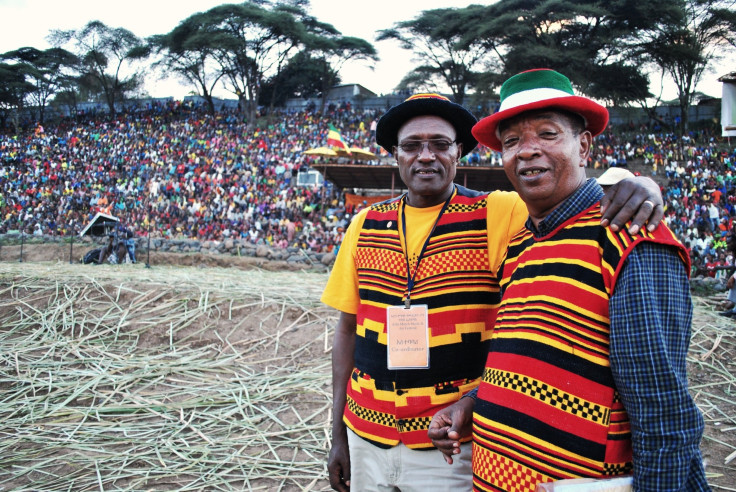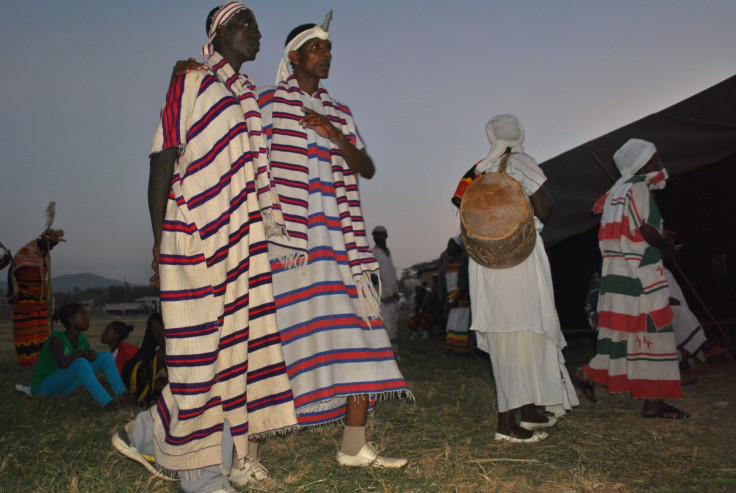Ethiopia's 'Festival of a Thousand Stars' Celebrates Diversity In The Cradle Of Humanity [PHOTOS]

ARBA MINCH, Ethiopia -- On day one of the Festival of a Thousand Stars, there were so many performers that the emcee had to rush them along as the sun began to set. “Aishe, ameseganehlu,” he said -- “Okay, thank you,” in Ethiopia's national language, Amharic -- as each troupe raced through its final seconds of singing and dancing while other performers waited in the wings.
There were 56 troupes in all gathered in the southern city of Arba Minch, or Forty Springs, for a three-day festival of music and culture. Each represented an ethnic group of southern Ethiopia, and each had a crew of performers in traditional costumes. The annual celebration centers around an outdoor stage ringed by microphones in the middle of a massive stadium; this year, thousands streamed in to watch the musicians, eat traditional foods and buy handmade crafts. The festival is funded by the Christensen Fund, a nonprofit organization based in San Francisco that backs bio-cultural diversity projects around the world.

Southern Ethiopia is one of the most diverse regions on earth. As a whole, the country is home to more than 80 ethnic groups and languages. The 56 featured at the festival all hailed from regions south of the central capital city of Addis Ababa.
Arba Minch is situated in the East African Rift Valley, which is often called the cradle of humanity since some of the earliest homo sapiens fossils have been found there. If the theory that all of modern humanity originated in the area is correct, then residents the Rift Valley boast a longer ancestral history than can be found anywhere else.
Culture here runs deep, says festival staffer and Arba Minch resident Silas Godana. “Southern Ethiopia is rich in diversity, because the Rift Valley is where humanity began,” he said. He mentioned the long history of traditional craftsmanship in the area and pointed to his vest, made by members of the Goma ethnic group with its trademark pattern of red, yellow and black. “There's no need to buy industrially produced clothes,” he added. “We wear handmade.”

Most of the festival attendees came from the area and were familiar with the various ethnic groups performing, cheering especially loudly when the most well-known singers and dancers -- the Goma, the Dirashe, the Wolayta and more -- approached the stage.
“There are so many cultures in Southern Ethiopia, and Arba Minch is the central city,” said Josef Kuma, a coordinator at the festival. “Arba Minch should be an international tourist destination, and the organizers want to develop that idea.” The town is a calm but busy one; it's big enough to have a small airport but remote enough to act as a base for U.S. military drone missions into Somalia and Yemen. Mango and banana trees are everywhere, and you can see crocodiles basking in the sun if you take a boat ride along the shores of the nearby Lakes Chamo and Abaya.

The Festival of a Thousand Stars -- its name is a reference to the myriad ethnicities and cultures in southern Ethiopia -- isn't widely known outside of Arba Minch, but the organizers hope that will change in the coming years. As it stands, there's more than enough entertainment to go around.
As the sun began to set on Friday, organizers handed out long orange candles to the children packed in the front rows, who ran through the crowd until the entire stadium was illuminated by tiny points of light. Some of the adults drifted off to a side stall to sample some tej, a cloudy alcoholic drink brewed from honey. But the dancers kept coming until nightfall, pounding the stage and playing handmade instruments even as the crowd began to thin.

© Copyright IBTimes 2024. All rights reserved.












